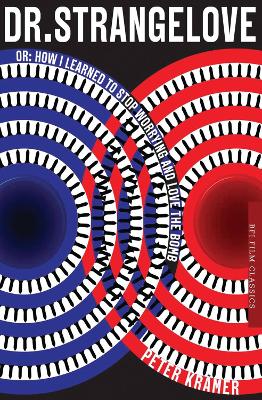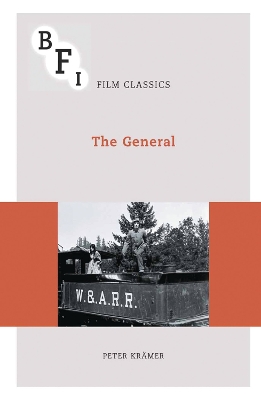BFI Film Classics
3 total works
Dr. Strangelove or: How I learned to Stop Worrying and Love the Bomb
by Peter Kramer
Published 31 October 2014
Stanley Kubrick's Dr. Strangelove or: How I Learned to Stop Worrying and Love the Bomb (1964) has long been recognised as one of the key artistic expressions of the nuclear age. Made at a time when nuclear war between the United States and the Soviet Union was a real possibility, the film is menacing, exhilarating, thrilling, insightful and very funny.
Combining a scene-by-scene analysis of Dr. Strangelove with new research in the Stanley Kubrick Archive, Peter Kramer's study foregrounds the connections the film establishes between the Cold War and World War II, and between sixties America and Nazi Germany. How did the film come to be named after a character who only appears in it very briefly? Why does he turn out to be
a Nazi? And how are his ideas for post-apocalyptic survival in mineshafts connected to the sexual fantasies of the military men who destroy life on the surface of the Earth?
This special edition features original cover artwork by Marian Bantjes.
Combining a scene-by-scene analysis of Dr. Strangelove with new research in the Stanley Kubrick Archive, Peter Kramer's study foregrounds the connections the film establishes between the Cold War and World War II, and between sixties America and Nazi Germany. How did the film come to be named after a character who only appears in it very briefly? Why does he turn out to be
a Nazi? And how are his ideas for post-apocalyptic survival in mineshafts connected to the sexual fantasies of the military men who destroy life on the surface of the Earth?
This special edition features original cover artwork by Marian Bantjes.
Stanley Kubrick's 2001: A Space Odyssey (1968) is widely regarded as one of the best films ever made. It has been celebrated for its beauty and mystery, its realistic depiction of space travel and dazzling display of visual effects, the breathtaking scope of its story, which reaches across millions of years, and the thought-provoking depth of its meditation on evolution, technology and humanity's encounters with the unknown. 2001 has been described as the most expensive avant-garde movie ever made and as a psychedelic trip, a unique expression of the spirit of the 1960s and as a timeless masterpiece.
Peter Kramer's insightful study explores the complex origins of the film, the unique shape it took and the extraordinary impact it made on contemporary audiences. Drawing on new research in the Stanley Kubrick Archive at the University of the Arts London, Kramer challenges many of the widely-held assumptions about the film. He argues that 2001 was Kubrick's attempt to counter the deep pessimism of his previous film, Dr Strangelove (1964), which culminates in the explosion of a nuclear 'doomsday' device, with a more hopeful vision of humanity's future, facilitated by the intervention of mysterious extra-terrestrial artifacts.
This study traces the project's development from the first letter Kubrick wrote to his future collaborator Arthur C. Clarke in March 1964 all the way to the dramatic changes Kubrick made to the film shortly before its release by MGM in April 1968. Kramer shows that, despite - or, perhaps, because of - Kubrick's daring last-minute decision to turn the film itself into a mysterious artifact, 2001 was an instant success with both critics and general audiences, and has exerted enormous influence over Hollywood's output of science fiction movies ever since. The book argues that 2001 invites us to enjoy and contemplate its sounds and images over and over again, and, if we are so inclined, to take away from it an important message of hope.
Peter Kramer's insightful study explores the complex origins of the film, the unique shape it took and the extraordinary impact it made on contemporary audiences. Drawing on new research in the Stanley Kubrick Archive at the University of the Arts London, Kramer challenges many of the widely-held assumptions about the film. He argues that 2001 was Kubrick's attempt to counter the deep pessimism of his previous film, Dr Strangelove (1964), which culminates in the explosion of a nuclear 'doomsday' device, with a more hopeful vision of humanity's future, facilitated by the intervention of mysterious extra-terrestrial artifacts.
This study traces the project's development from the first letter Kubrick wrote to his future collaborator Arthur C. Clarke in March 1964 all the way to the dramatic changes Kubrick made to the film shortly before its release by MGM in April 1968. Kramer shows that, despite - or, perhaps, because of - Kubrick's daring last-minute decision to turn the film itself into a mysterious artifact, 2001 was an instant success with both critics and general audiences, and has exerted enormous influence over Hollywood's output of science fiction movies ever since. The book argues that 2001 invites us to enjoy and contemplate its sounds and images over and over again, and, if we are so inclined, to take away from it an important message of hope.
Offering a fresh perspective on The General, arguably one of the most successful American films of the silent era, this insightful text analyses its initial critical reception and the thematic and stylistic characteristics of the film that made it difficult for critics to appreciate at the time, but led to its celebration by later generations.


